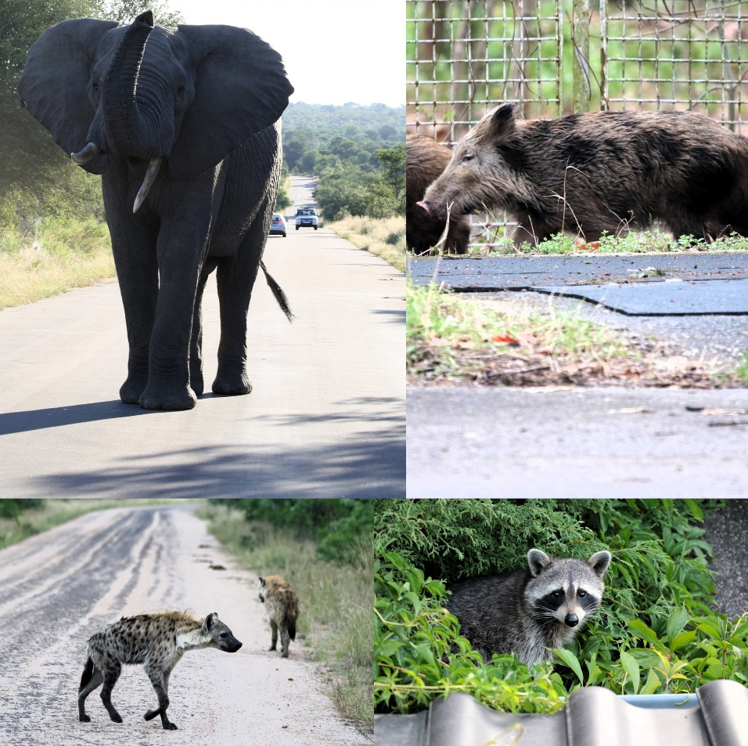Human Wildlife Conflict across Landscapes—Second Edition
A special issue of Diversity (ISSN 1424-2818). This special issue belongs to the section "Biodiversity Conservation".
Deadline for manuscript submissions: 20 February 2025 | Viewed by 2412

Special Issue Editor
Interests: mammalian ecology; protected area networks; wildlife conservation
Special Issues, Collections and Topics in MDPI journals
Special Issue Information
Dear Colleagues,
I cordially invite you to submit your work to this 2nd edition of a Special Issue entitled “Human Wildlife Conflict across Landscapes”.

photos by Thomas Göttert
Since human–wildlife interrelations take place on many levels, it would be desirable to illustrate the breadth of topics and phenomena. Fortunately, there seems to be a paradigm shift from an anthropocentric perspective on “conflicts” to more empathetic approaches that give greater importance to the “wildlife side of the coin”. In light of rapidly transforming landscapes, effective concepts and tools are needed to address the consequences of human resource use and habitat demands as well as the environmental requirements of wildlife. At the same time, it is important to understand and adequately capture the ecological plasticity of different species in order to understand the adaptability of humans and non-human species to a rapidly changing world.
Dr. Thomas Göttert
Guest Editor
Manuscript Submission Information
Manuscripts should be submitted online at www.mdpi.com by registering and logging in to this website. Once you are registered, click here to go to the submission form. Manuscripts can be submitted until the deadline. All submissions that pass pre-check are peer-reviewed. Accepted papers will be published continuously in the journal (as soon as accepted) and will be listed together on the special issue website. Research articles, review articles as well as short communications are invited. For planned papers, a title and short abstract (about 100 words) can be sent to the Editorial Office for announcement on this website.
Submitted manuscripts should not have been published previously, nor be under consideration for publication elsewhere (except conference proceedings papers). All manuscripts are thoroughly refereed through a single-blind peer-review process. A guide for authors and other relevant information for submission of manuscripts is available on the Instructions for Authors page. Diversity is an international peer-reviewed open access monthly journal published by MDPI.
Please visit the Instructions for Authors page before submitting a manuscript. The Article Processing Charge (APC) for publication in this open access journal is 2100 CHF (Swiss Francs). Submitted papers should be well formatted and use good English. Authors may use MDPI's English editing service prior to publication or during author revisions.
Keywords
- carnivore–livestock conflicts
- comparative (regional) approaches
- edge effects and land use contrasts
- indigenous knowledge as a mitigation tool
- wildlife corridors and buffer zones
Benefits of Publishing in a Special Issue
- Ease of navigation: Grouping papers by topic helps scholars navigate broad scope journals more efficiently.
- Greater discoverability: Special Issues support the reach and impact of scientific research. Articles in Special Issues are more discoverable and cited more frequently.
- Expansion of research network: Special Issues facilitate connections among authors, fostering scientific collaborations.
- External promotion: Articles in Special Issues are often promoted through the journal's social media, increasing their visibility.
- e-Book format: Special Issues with more than 10 articles can be published as dedicated e-books, ensuring wide and rapid dissemination.
Further information on MDPI's Special Issue polices can be found here.





